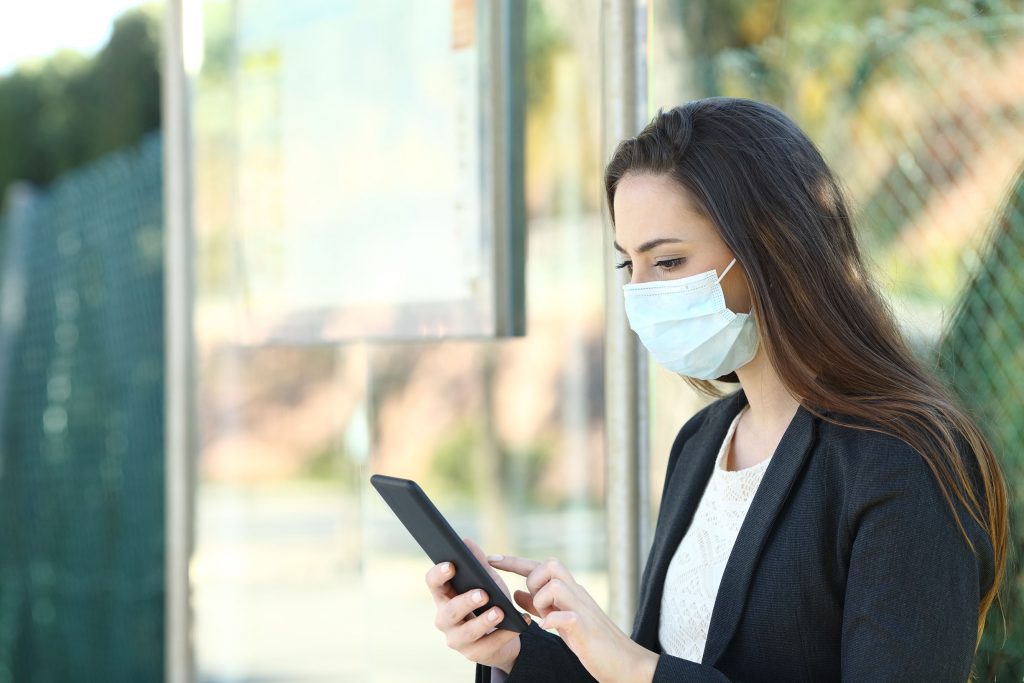
The Government of Ontario has announced Stage Three of its Framework for Reopening the Province to relax some COVID-19 related restrictions on business and restore choices to consumers in the marketplace. As part of Stage Three, real estate open houses have been taken off the prohibited list. OREA is providing guidance in accordance with the Ontario government’s framework to protect the health and safety of our clients and colleagues.
Digital tools and virtual home tours have proven extremely effective over the past few months, and many REALTORS® will continue to rely on these tools as well as safe, scheduled in-person showings to help their clients buy and sell homes. You can find guidance on safely hosting an in-person showing in OREA’s Guidance on Real Estate Transactions in Stage Two of Ontario’s Framework for Reopening the Province.
OREA will continue to call upon our Members to conduct services remotely and to utilize alternatives such as virtual open houses, virtual showings or in-person safe showings, and electronic signing of documents first and to the greatest extent possible. Let your clients know about available alternative marketing opportunities that will allow you to continue to serve them and market their home while reducing the risk of spreading the COVID-19 virus. Open houses should be used as a last resort to market a home and only employed at a seller’s request and with the seller’s approval and in accordance with all applicable health directives.
We have provided some considerations and guidance below for safely hosting an open house. It is OREA’s number one priority to protect the health and safety of our REALTORS® and their clients. As we move into Stage 3 of Ontario’s Framework for Reopening the Province, we trust that our Members will continue to put health and safety first while doing what you have always done best – helping Ontarians achieve the dream of a great place to call home.
GUIDANCE TO FOLLOW FOR A SAFE REOPENING IN STAGE 3

With the option to host an open house available to you (visit the OREA COVID-19 Information Hub for a list of regions allowed to move into Stage Three on Friday, July 17), be sure to consider the following:
Are you and your client comfortable with hosting an open house?
REALTORS® should continue to use digital and virtual technology to interact with clients wherever possible and to market or show a home. We strongly encourage you to continue speaking with your clients openly about their comfort levels with allowing or conducting in-person showings and now with open houses. You should only proceed with an open house if your client has approved it as part of your overall marketing plan to sell the home. If your client would like to proceed with open houses but you, as a REALTOR®, are not comfortable hosting them, consider requesting assistance from a colleague in your brokerage who is comfortable with offering this service.
What is a practical limit on the number of people allowed through an open house?
We strongly recommend setting a limit of one group of two people (plus the buyer’s sales representative if they are attending with the buyer(s)) in an open house at any one time. In Stage 3, gathering limits for higher risk settings, including open houses, go up to 50 people indoors and 100 people outdoors. Physical distancing remains a requirement for all people who are not from the same household or social circle. However, REALTORS® should not interpret the government limit of 50 people as appropriate for open houses. It simply is not practical to expect that 50 people in a home at one time will allow for safe physical distancing protocols to be observed.
SAFE OPEN HOUSE PRACTICES

Post a clear protocol
Outside the residence, for open house guests to follow. If possible, distribute this information electronically before the open house.
Request self-screening of COVID-19
Post signage on the property entryway door stating that if people have been ill, have symptoms of COVID-19, have come in contact with a person with symptoms or a confirmed case of COVID-19, they should not enter the home under any circumstances.
Set a time limit
Limit the time each group spends inside the residence to ensure all guests have the opportunity to see the home during open house hours.
Set a limit on guests
While indoor gatherings are limited to 50 people, limit the number of people in the house to one group of two people (plus the buyer’s sales representative if they are attending with the buyer(s)), to allow for physical distancing. Homeowners should not be present during the open house.
Require personal protective equipment (PPE) use
Ensure masks or face coverings are always worn inside. Consider providing this PPE outside the entrance of the residence. Masks are now mandatory in indoor public spaces in all municipalities in Ontario as cities have enacted bylaws to help prevent the spread of COVID-19.
Manage the flow of traffic
If a line forms outside, people should be staggered 6’ apart. Consider signage or markers to this effect. Have an assistant manage physical distancing outside the home and for people registering. While a showing is in progress, place a sign on the door to indicate that and ask other guests to wait in a queue or their cars.
Sanitize hands before and after
Provide hand sanitizer at the door and require guests to disinfect before entry. Disinfect surfaces, door handles, and parts of the house that guests come in close contact with both before and after the open house.
Enforce ‘no touching’ rules
Open all of the interior doors and closet doors and turn on lights to complete any open house visits without having to touch these surfaces. Bathroom use should be prohibited. The listing REALTOR® should be available to open cabinets, storage spaces, blinds, etc.
Digital only feature sheets
Feature sheets and other promotional materials on the home should be available electronically online and accessible to guests by email, QR code or your website.
Protocols for multi-tenanted properties
For multi-tenanted properties like condominiums, discuss with the seller whether building management has any COVID-19 safety protocols to be aware of and incorporate those into your plan. Also, enlist the help of an assistant to manage entry to the building and other common areas, and to maintain physical distancing between consumers in common areas.
PREPARATION FOR POSSIBLE CONTACT TRACING AFTER AN OPEN HOUSE

Identifying everyone who attends an open house will be even more important to assist with contact tracing if someone in attendance reports they contracted COVID-19. Provide a means of contacting all open house attendees, but be clear that any personal information collected will only be used for the purpose of notifying them of any health concerns (note that under PIPEDA personal information can only be used for the purpose you disclosed when collecting it).
Before they enter, guests should provide the listing REALTOR® with their address, phone number and/or other contact information. A good way to limit contact with REALTORS®, is to ask guests to text their name and number to a designated phone number before entering the home.
You should also ensure that, before entering the home, guests sign a declaration or verbally confirm they have no symptoms of illness (i.e. cough, fever, sore throat) and that they have not knowingly been in contact with anyone with symptoms.
Impress upon guests the importance of providing correct information for their own safety as well as others.
GUIDANCE TO CONTINUE FOLLOWING FROM STAGE 2

OREA strongly recommends continuing its Stage Two safety measures during in-person property showings and interaction with clients. OREA’s Stage Two guidance document also provides general guidelines for ensuring a healthy work environment in the brokerage office. For a review of OREA’s Stage Two guidelines, please visit the OREA COVID-19 Information Hub.
Disclaimer. The information contained in this post is not meant to be relied upon as legal advice by REALTORS®, or others. Members wishing further clarity or advice should seek independent legal advice specific to their circumstances. Due to the quickly changing regulatory environment during the COVID-19 emergency, this document may not be current or accurate by the time it is read.
The trademarks REALTOR®, REALTORS®, and the REALTOR® logo are controlled by The Canadian Real Estate Association (CREA) and identify real estate professionals who are members of CREA.
NOTES:
The following link to ‘Public Health Ontario’s Covid-19 Public Resources’ provides specific advice with respect to, amongst other things, mask use, physical distancing, cleaning and disinfecting and situations where self-isolation is necessary:
The Ontario Government’s Resource Page (link below) includes guidance on such things as the use of personal protective equipment, appropriate controls and distancing issues, etc…
https://www.ontario.ca/page/resources-prevent-covid-19-workplace#section-1
Please note that local (municipal) public health officers may have augmented any advice, recommendation and guidance provided by the public health officials of the Province of Ontario.
It is also crucial to note that COVID-19 advice, recommendations and instructions, are regularly revised and so REALTORS® must take all appropriate steps to inform themselves with respect to the current advice, recommendations and instructions.